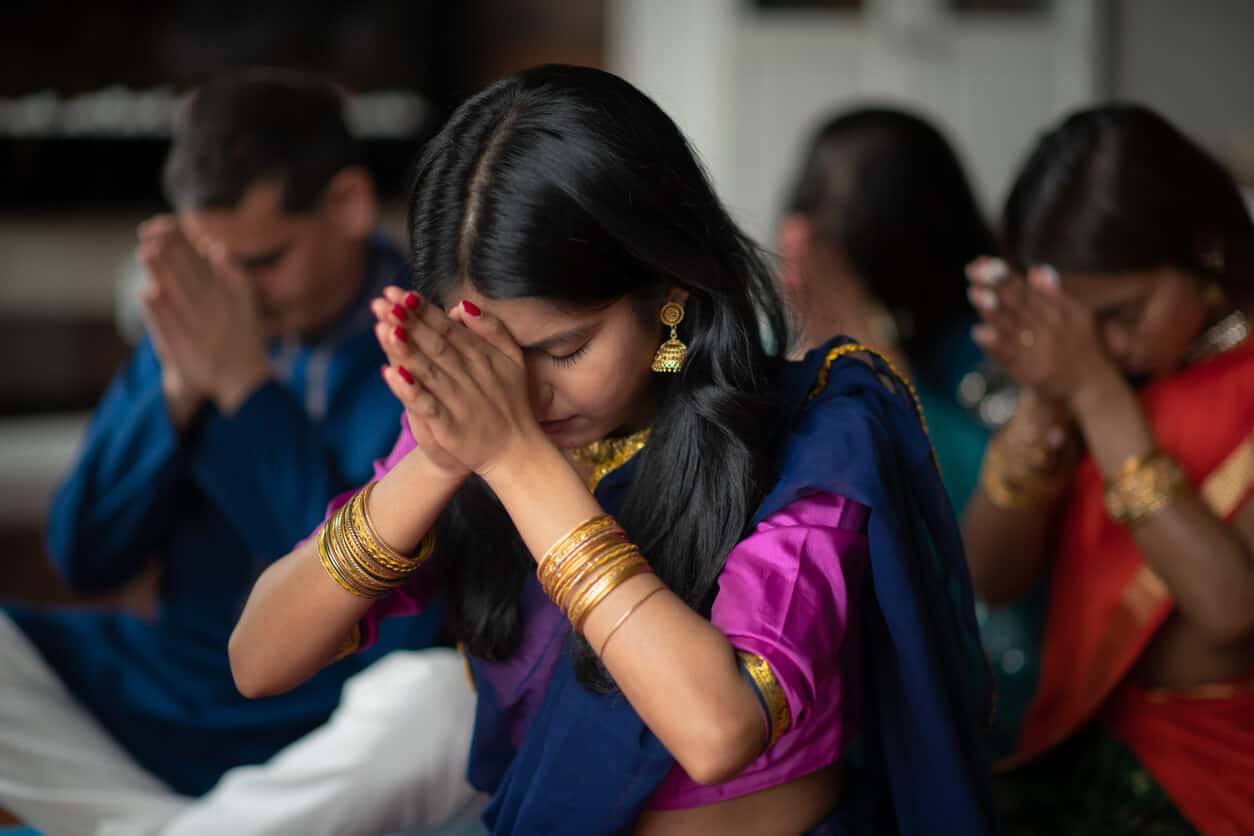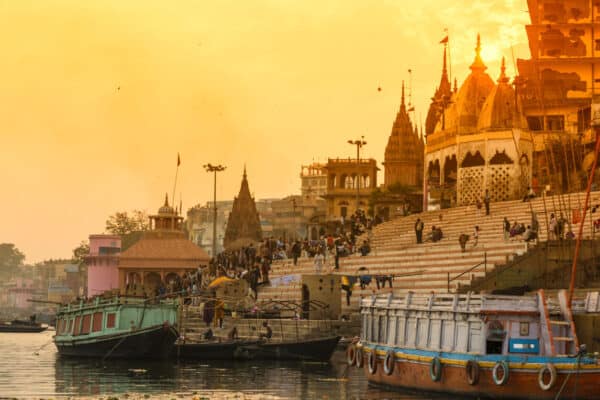If you have never been to a Hindu funeral, you may know little about Hindu cremation and end-of-life beliefs. Here’s some general information about Hindu death rituals and beliefs. However, it’s important that you understand that there are several sects, so Hindu funeral rites may depend on the region and other factors.
Table of Contents
What You Need to Know About Hindu Funeral Rites
Before we discuss Hindu funerals, it may be helpful to know about the Hindu cycle called Samsara. It consists of birth, death, and rebirth. The actions performed in a person’s lifetime influence future births. The ultimate goal is to break free from this cycle and achieve moksha, or liberation.
Since death is seen as a natural transition, not the end of existence – it is viewed differently than in other cultures. You will notice this difference in the Hindu funeral ceremony and the grieving process – where grief is acknowledged. Still, individuals are encouraged to accept death as a part of the natural order.
Hindu cremation
Cremation is the most common method of disposing of the body in Hinduism. The Hindu cremation ceremony is said to release the soul from its earthly existence. The cremation ceremony is a crucial ritual known as Antyesti, which involves family members and priests performing specific rites to facilitate the soul’s journey to the afterlife.
Funeral rites
When someone dies, the body of the deceased is bathed and dressed in new or ceremonial clothing and wrapped in a white cloth. After, family and friends take the body to the cremation site. The eldest son or another close male relative usually lights the funeral pyre, initiating the cremation process.
At the cremation ground, male family members and a Hindu priest perform cremation rituals. Rice balls are a crucial part of these rituals as they are believed to nourish the departed soul during its journey in the afterlife.
After Hindu cremations, the ashes are often collected and immersed in a sacred body of water, such as the Ganges River. This act symbolizes the return of the elements to nature.
Hindu mourning period
After cremation, there is a mourning period called Shraddha, during which Hindu families perform rituals and offer prayers for the deceased. This period varies in duration, but it often lasts 13 days.
Hindus also observe a specific fortnight called Pitru Paksha, during which those of the Hindu faith perform rituals to honor and offer prayers for their ancestors.
Hindu Funeral Etiquette
Hindu funeral etiquette involves respectful and culturally appropriate behavior when attending or participating in funeral ceremonies. If you are unfamiliar with Hindu funeral customs, observing and following the lead of the family and other attendees is advisable. If you have questions, you can discreetly ask someone knowledgeable about the rituals.
Wear somber and modest clothing to a Hindu funeral. White is a commonly preferred color for mourning in Hindu funerals, symbolizing purity.
Express your condolences to the grieving family members. Simple gestures, such as a heartfelt “Namaste” (a traditional Hindu greeting), can convey sympathy.
You can also donate to a charity in the deceased’s name, give the family flowers, or offer food.
It’s important to recognize that traditional Hindu funeral rituals can be diverse, and the specific rituals followed may vary based on regional customs and individual preferences within the broader framework of Hindu religious beliefs. Additionally, contemporary Hindus may adapt some of these practices to align with modern circumstances and legal requirements.
For more information about cremation and religion, consult with Philadelphia Cremation Society. Philadelphia Cremation Society provides affordable direct cremation in Pennsylvania and New Jersey. Contact Philadelphia Cremation Society today to learn more about pre-paid plans.






